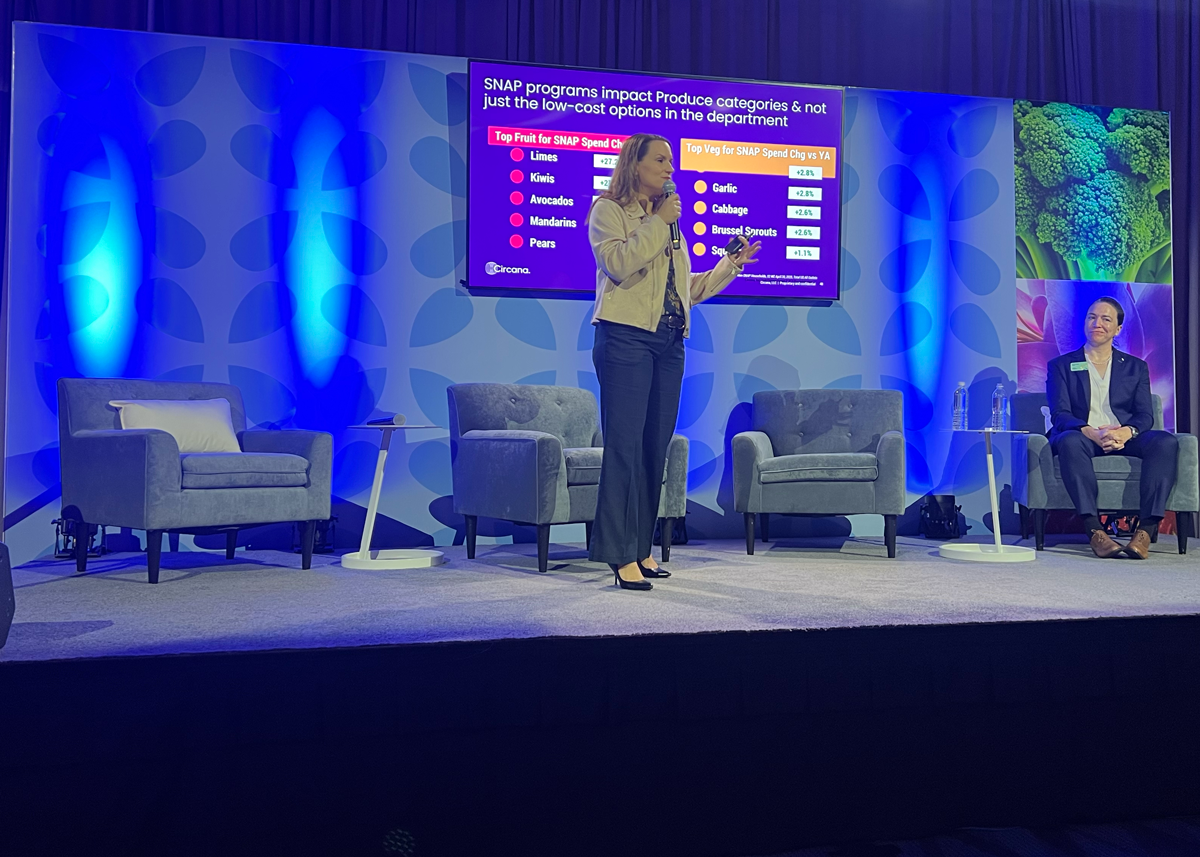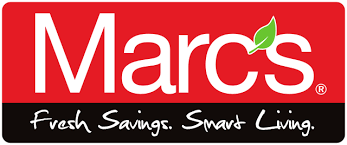ANAHEIM, Calif. — Rachel Blake, global insights manager for the International Fresh Produce Association, and Jonna Parker, vice president and team lead at Circana, took the IFPA Global Produce and Floral Show stage to discuss the similarities and differences in global consumer trends and to dig a little deeper into trends in the U.S.
Blake began by introducing how IFPA tracks consumer trends in key markets in Australia, Brazil, China, Germany, South Korea, the United Kingdom and the U.S. These seven countries represent about 40% of global produce imports, which total more than $80 billion. IFPA tracks cross-generational trends among Gen Z, millennials, Gen X and baby boomers.
She stressed that while produce companies can use these findings to create a global strategy, it's important to pay attention to the local differences in consumer preferences.
Blake looked at five big trends impacting consumer behavior: buy local, sustainability, price stress, packaging and organics — and how, depending on the country and generation, preferences vary.
For example, she says that more than 80% of South Koreans are willing to pay more for local produce, with Gen Z leading in every country. But what she says is interesting is what “local” means for each country.
“In Asia, we're talking about the same country, and Europe is the same region within a few 100 kilometers, and the United States what local means is very different,” she says. “What's interesting is that it doesn't necessarily translate into a supply chain reality in the U.S. We're still seeing imports grow every year — $38 billion in imports last year, up 8% over the previous year. While local is a really strong positioning strategy from a marketing perspective, it's not really playing out in the supply chain.”
Sustainability is another broad topic that consumers focus on. But, again, Blake says what sustainability means varies by country. In China, 77% of consumers rank sustainability as of importance, compared with only 54% of U.S. consumers.
“In Asia, we see this trend led by baby boomers. There's a lot more money behind that. They're able to pay more versus being pushed by younger demographics in the West,” she says. “And so, you see this regional shift based on the table stakes for entrance into the Asian market, but it's still something that's been rewarded with premium positioning.”
When it comes to the price of goods, Australians have a high price stress at 53% versus China at 28%, Blake says.
“China's able to accept more premium-positioned products,” she says. “They're able to go in and order those higher-quality imports versus Australia, which kind of resists that premium positioning. What's really interesting is that generational paradox. Younger consumers are more price-stressed overall, but they still drive every single premium trend that we track. So, what that tells us is that consumers might be stressed about prices, but they're also willing to pay more for perceived value.”
Globally, consumers' views on packaging vary, Blake says. For example, 48% of consumers in China view packaging for safety and convenience, compared with only 28% of Germans.
“What's really interesting is that, universally, Gen Z accepts packaging everywhere,” she says. “What that tells us is that while you might need a very different customer segmentation strategy based on regions, today, you're going to see convergence over time as Gen Z grows up.”
Organic purchases globally are high, Blake says, with 86% of Chinese consumers purchasing organic products, compared to the low end of the spectrum with about 70% of U.S. consumers reporting purchases of organic produce. While many produce marketers may think organics globally are driven by income, it's actually generationally driven, she says.
“In China and Brazil, it's Gen X. In Australia and in the U.S., we're looking at the millennials,” she says. “Really interesting, in Germany and South Korea, you have this big split. Both Gen Z and baby boomers are leading the trend in those regions.”

Diving into U.S. Trends
Parker says what's interesting about premium positioning is that while marketers might see premium positioning, consumers don't view food in the same way. In looking at data from September, 95% of American consumers report concerns about food cost inflation. She says while the actual food and beverage price increase in September was only 2%, August and September were the first two months that food and beverage volumes contracted. Parker says 68% of consumers reported making changes to shopping habits.
“One trip to one different store does end up reshaping someone's pattern,” she says. “Over the last five years, first with COVID, then with inflation and now with a sustained uncertainty in the economy, making a change is now a behavior, but we are seeing an acceleration of watch and spend more closely.”
But, she says, as with global trends, organic produce hit an all-time high in the share of pounds sold, so it's not necessarily all bad news.
“We're not necessarily racing to the bottom; we're solving our needs differently with new tools and new ideas,” she says.
Pricing concern is driven by millennials and Gen Z, where she says 93% of those shoppers indicate going to stores, they perceive to be cheaper. Parker says shelf life is also another area for marketers to tap into, with 71% of people reusing disposable plastics.
“Best by dating and knowing how long a piece of fruit or a piece of veg is good is a motivator to consumers, especially given the advancements we made in the supply chain to extend that shelf life,” she says.
And along the lines of younger consumers shopping at stores that offer perceived value, hard discounters seem to drive purchases
“Supermarkets are now only 43% of all U.S. fresh food sales,” she says.
Parker says natural food retailers such as Sprouts, the Fresh Market and Whole Foods might only make up about 2.6% of the fresh food market but says it's contributing both to dollar share and to growth, which is worth noting.
While it would be easy to assume consumers would flock to food value stores, Parker says that category hasn't shown a huge shift in sales.
“Those chains are pretty much contributing what we'd expect them to contribute,” she says, nothing, though the produce departments of the food value stores have seen a major facelift and has become more experiential. “So do not discredit food value chains as not being formidable competitors in fresh produce, and even in organics.”
Parker notes about half of U.S. shoppers pick Walmart as their favorite place to buy produce, and that figure is higher among younger generations.
Club continues to grow in market share, Parker says, with Costco, BJ's and Sam's Club all punching double their weight in terms of growth.
“I think the club channel has done a nice job, not just in selling in bulk, but selling really specific pieces to the right consumers,” Parker says. “They watch very closely when something isn't working and you trade out an item seasonally, especially in categories like salads or some of the fruit options.”
U.S. Shopper Habits
Parker says 49% of the dollars spent in the fresh food category come from high-income shoppers.
“What's interesting about the high income is they're continuing to drive dollar sales about 5.7% — one of the highest increases on this chart,” she says. “But just like middle- and low-income shoppers, they're watching how many items they're putting in the basket overall, just in time.”
She says that while all three income brackets continue to spend more dollars, they are buying fewer units to keep the average basket size down. Parker says those in the Supplemental Nutrition Assistance Program have increased their spending on fresh produce, reducing spending on foodservice and nonfood groceries.
“We've seen SNAP beneficiaries have these sizable spending change forces in areas like limes, kiwis, avocados, mandarins and pears,” she says. “What's interesting about that is most of those items are not necessarily the cheapest fruit or vegetable option in that list. We see that as they're cooking at home more, they want to solve their needs more and go into places just like any other consumer, where they know they're going to have a good experience that meets their snacking needs.”
Parker says in Circana's retail sales forecast, beverages look to be up double digits and set to grow in the next five years at faster rates than produce. While produce does look to grow, Circana projects some produce categories to decline.
“Several categories are the growth drivers of this trend, and there are actually seven produce categories, including mega categories like salads and leafy greens, that are forecasted to see declines if we don't change their trajectory now and get more relevant to more consumers more often,” she says.
Parker says one thing that stands out in her research, much like Blake discussed, is younger consumers shop in a fundamentally different way.
“One thing they all agree on is that they want produce to be on sale with deals and promotions,” she says. “The role of being able to source what you want, understanding easy-to-find pricing, is much more in demand for the younger generation because, to be honest, the average supermarket produce department looks very much like it did in the '80s, even though we are fundamentally shopping it differently.”
Parker says produce offers consumers a fantastic value. Consumers have many fresh produce package sizes to choose from.
“We have to stop just thinking about the fob price that goes into a retailer and actually think like a consumer who's deciding based on benefits and affordability,” she says. “Produce is a tremendous way to meet so many needs for such a huge value, and wellness overall is in demand for consumers.”

















